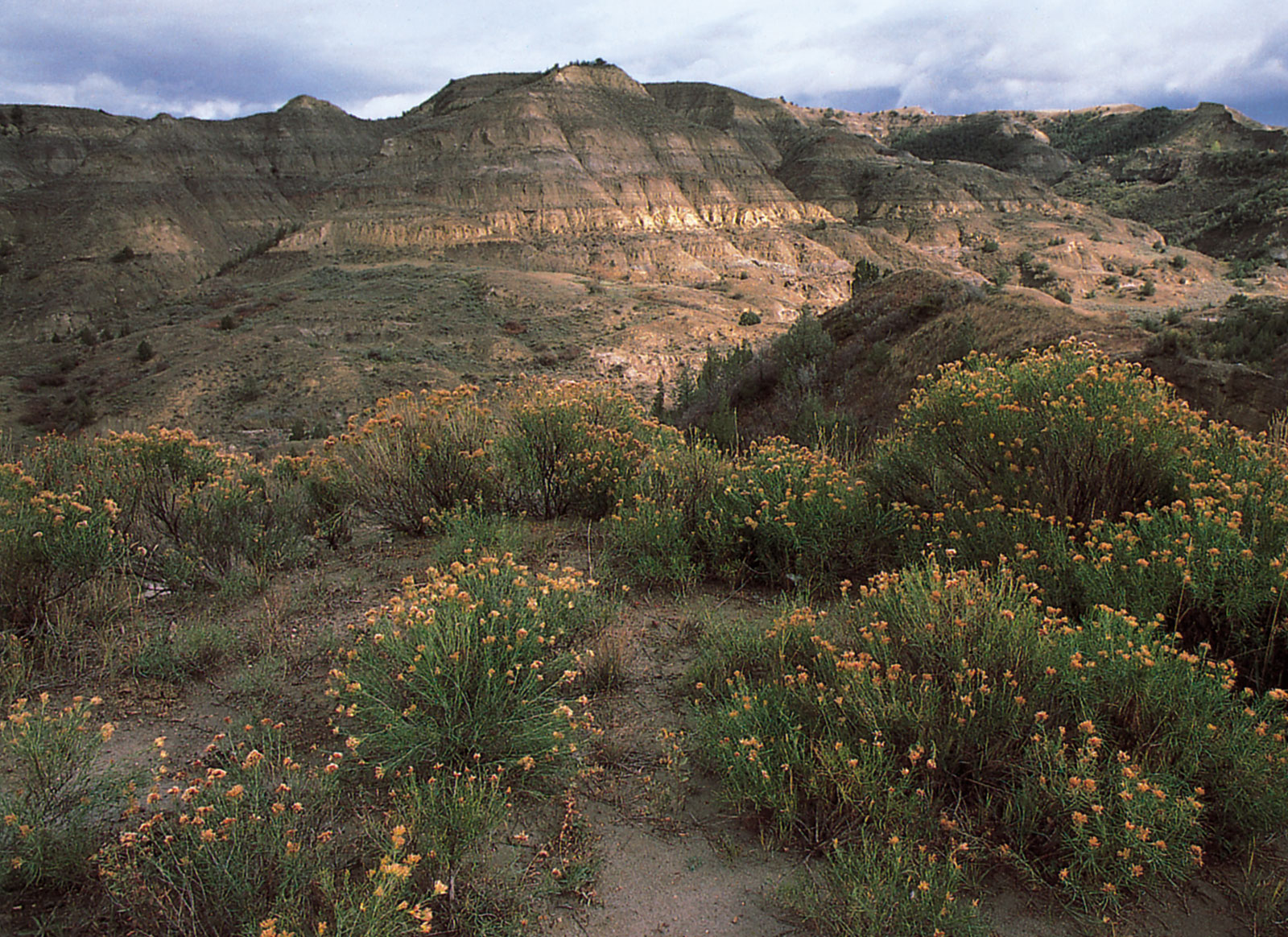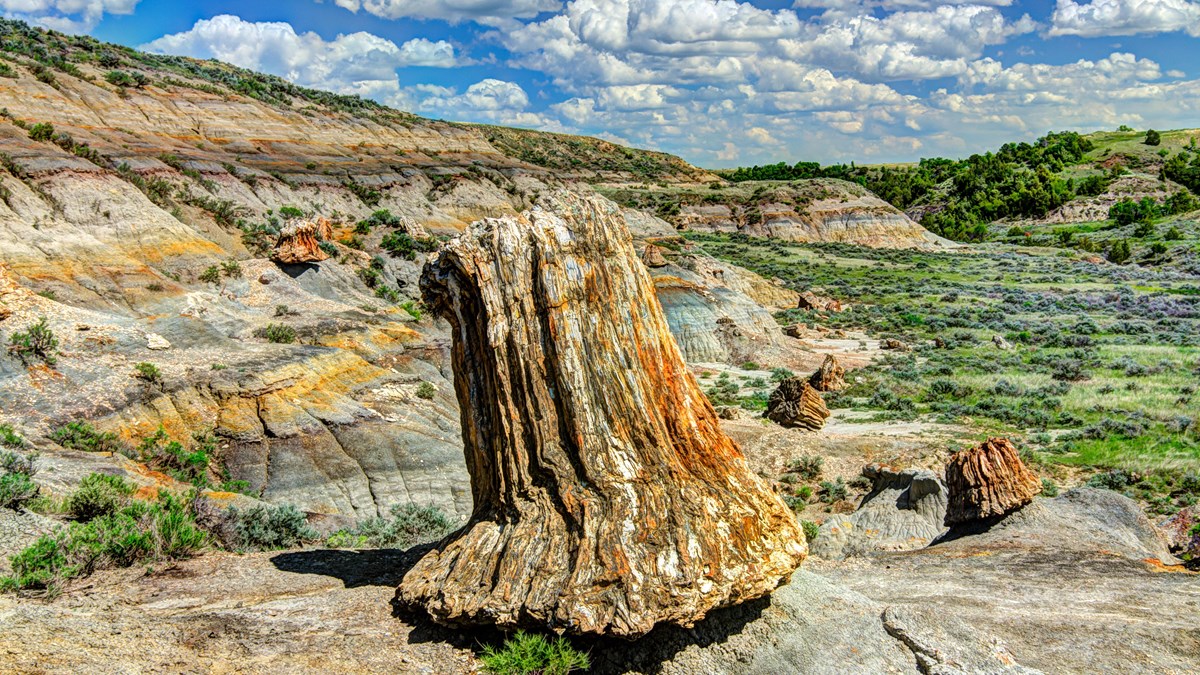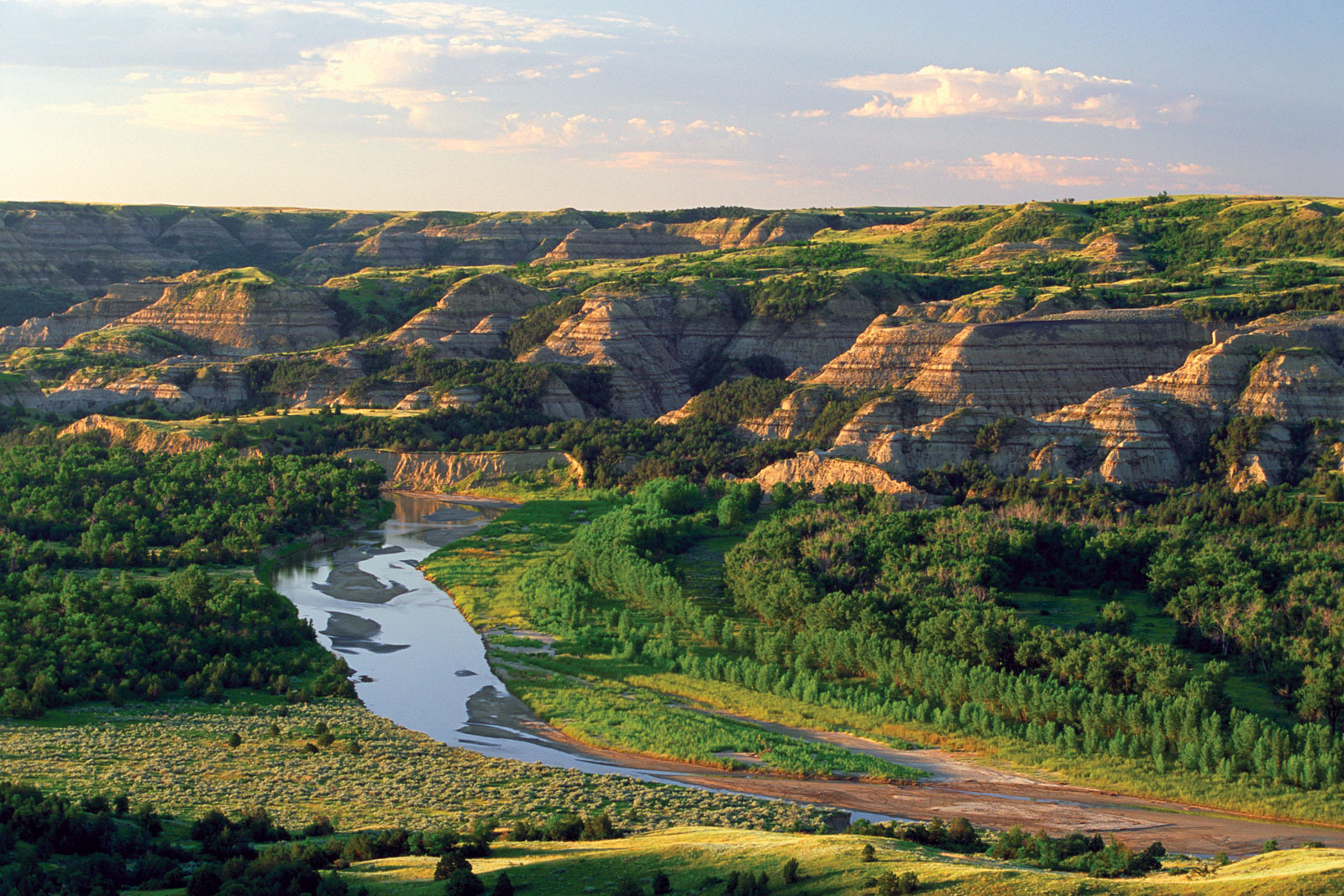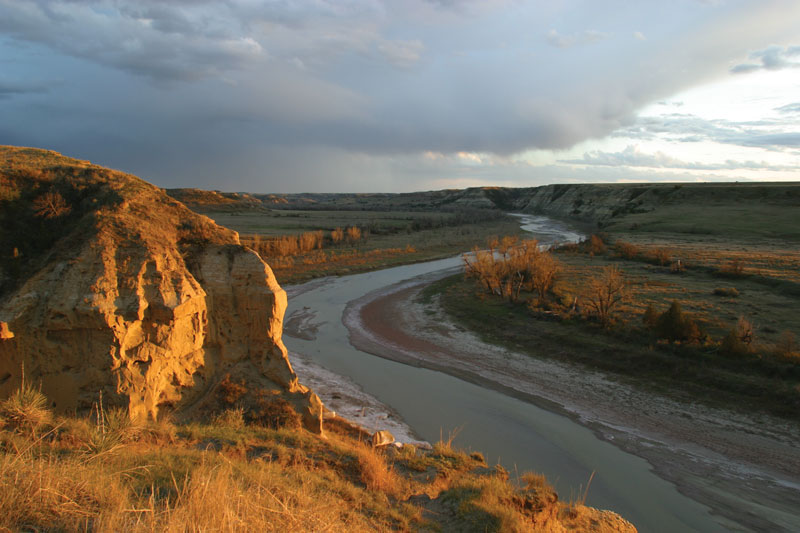Little Missouri River from an overlook in Theodore Roosevelt National Park (South Unit), southwestern North Dakota, U.S.
Image Credit: Michael J. Thompson/Shutterstock.com
The region's climate is warm temperate, with hot summers and long cold winters. Daytime highs average 80 °F (27 °C) or above in July and August, and nighttime lows can drop to 0 °F (-18 °C) in January. Precipitation is moderate, about 15 inches (380 mm) annually. Weather conditions can change rapidly, and thunderstorms in summer and blizzards in winter are common.
Native grasses that can tolerate the hot and dry summers are the predominant vegetation in the park. Junipers grow on the north faces of hills and buttes, and cottonwood, elm, and ash trees thrive along rivers and streams. A wide variety of wildflowers bloom from late spring to late summer. Bison, which once roamed widely throughout the region, were reintroduced into the South Unit in 1956 and into the North Unit in 1962, and there are now several hundred head in the park divided between the two herds. The park's other mammal inhabitants include deer, elk, wild horses, coyotes, and prairie dogs. Some 185 species of birds can be found in the park, including permanent residents such as golden eagles and great horned owls and dozens of migrants, notably sandhill cranes.

Wildflowers blooming in the badlands of Theodore Roosevelt National Park, western North Dakota, U.S.
Image :Annie Griffiths Belt
Roosevelt first visited the area in 1883, when the frontier was fast disappearing. That same year he joined with several men as partners in an open-range cattle ranch, the Maltese Cross Ranch, in what is now the South Unit of the park. In 1884 he established his own cattle ranch, the Elkhorn. The harsh winter of 1886-87 nearly wiped out his investment, but he continued to visit the Elkhorn Ranch from time to time until 1896. Roosevelt's experiences in this part of the West were the inspiration for several of his books and influenced his conservationist policies later when he was president. The Maltese Cross Ranch, moved from its original location, is now maintained as a museum near the South Unit's main visitor's centre.



